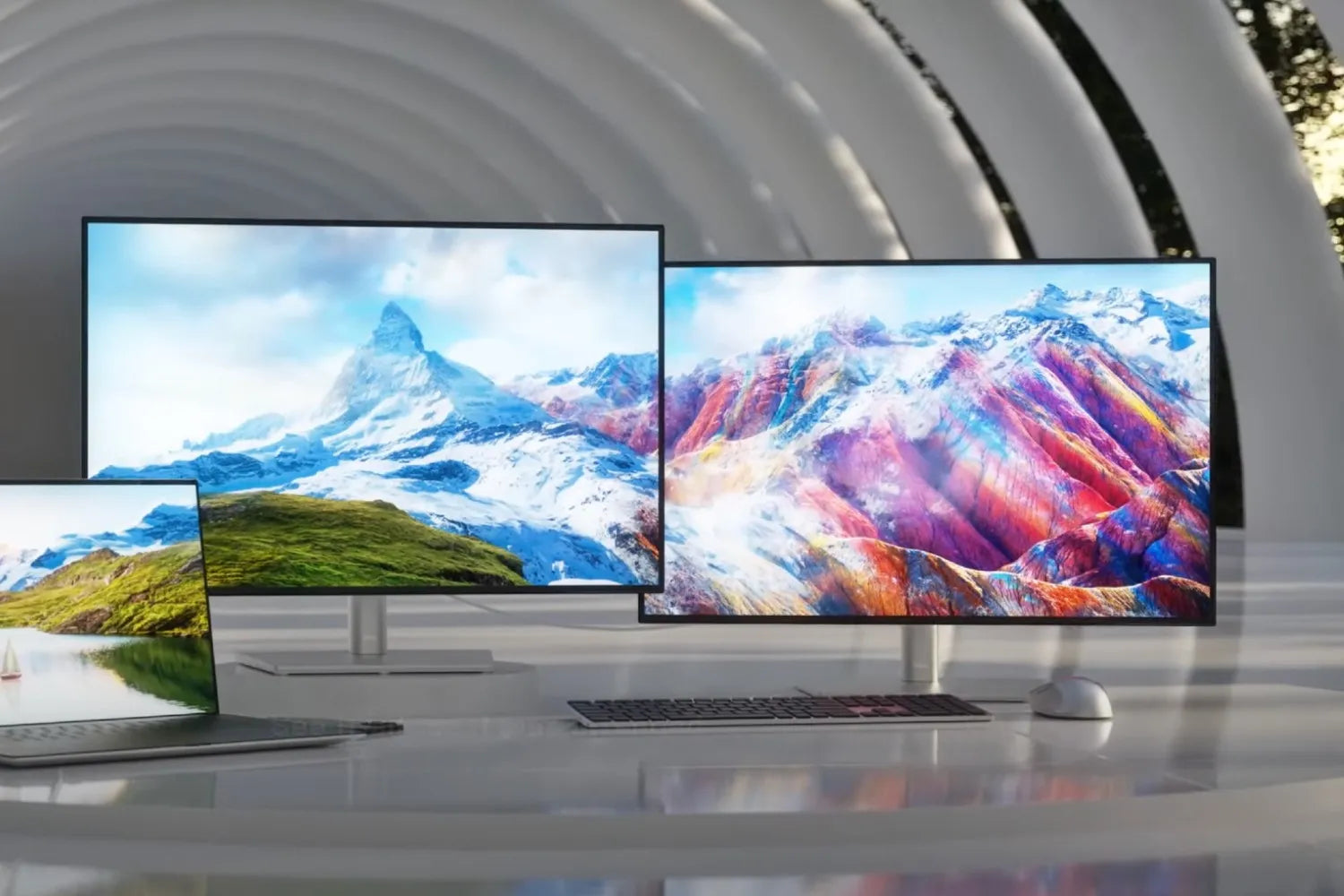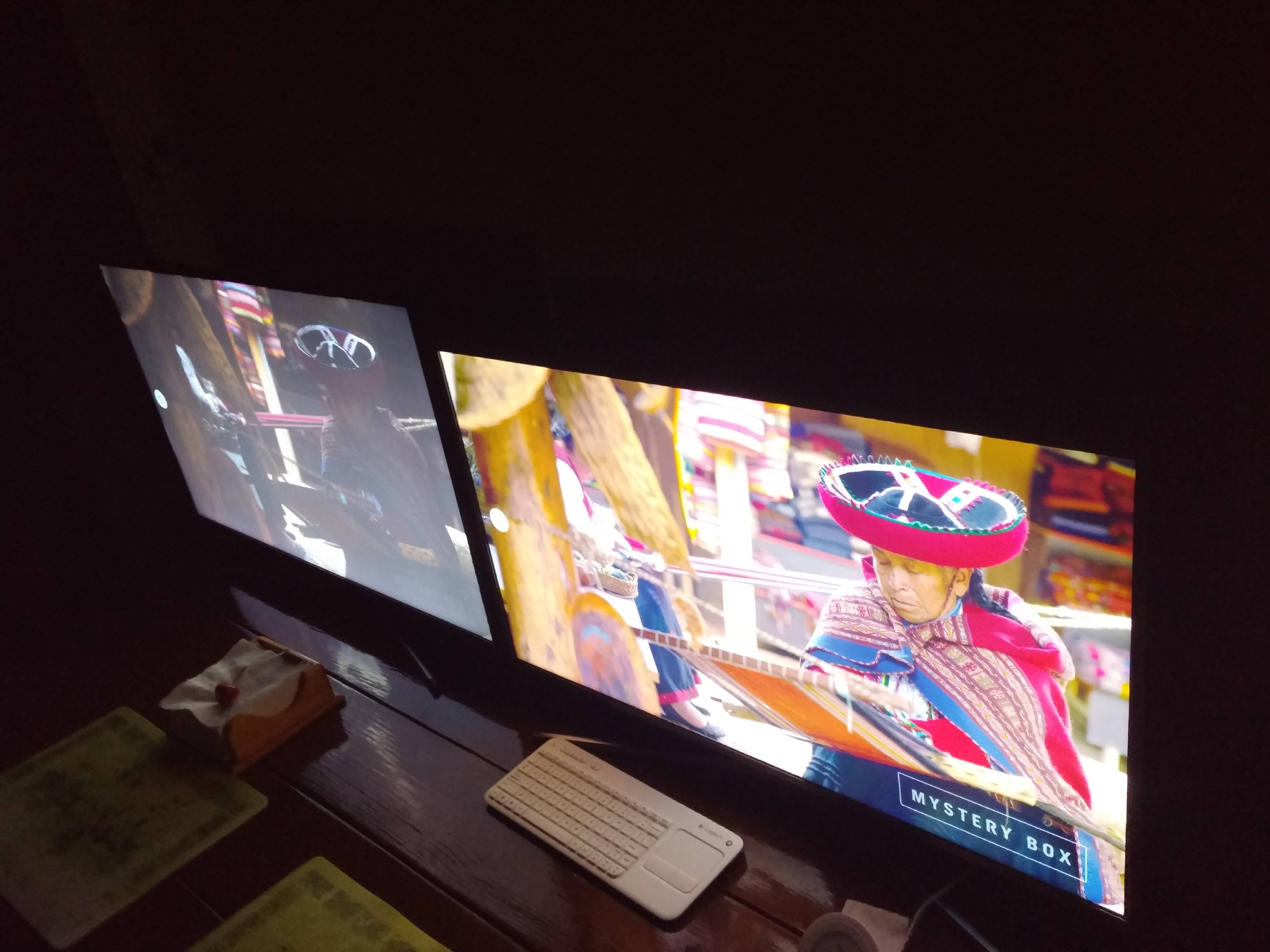When choosing between IPS and VA panels, IPS offers superior color accuracy and wide 178° viewing angles with consistent image quality, making it ideal for graphic design and multitasking, whereas VA provides a significantly higher 3000:1 contrast ratio for deeper blacks and better dark room media consumption, though it has narrower viewing angles.
Viewing Angles & Color Performance: Where IPS Clearly Wins
The industry-standard metric for viewing angles is the point at which contrast ratio drops to 10:1. IPS panels consistently hit 178 degrees both horizontally and vertically. This means you can view the screen from a sharp 89-degree angle from the center on either side and the colors will remain largely consistent.
| Feature | IPS Panel Typical Performance | VA Panel Typical Performance |
|---|---|---|
| Viewing Angle (H/V) | 178°/178° | ~160°/160° |
| Color Shift at 45° | Minimal (Delta E < 5) | Significant (Delta E > 10) |
| Color Coverage (sRGB) | >99% common on mid-tier models | ~90-95% on equivalent models |
| Brightness Uniformity | Typically >85% | Often <80% |
Most mid-to-high-end IPS monitors cover over 99% of the sRGB color gamut, the standard for web content and many professional workflows. Premium models extend into 98%+ DCI-P3 coverage for video and cinematic work.A VA panel, in contrast, can exhibit noticeable gamma and color shift even at relatively mild 30- to 45-degree offsets, making it unreliable for precision tasks.
- The consistency of an IPS panel is measured by its brightness uniformity, often achieving 85% to 90% across the entire panel, meaning the corners are almost as bright as the center.
- Color accuracy is measured in Delta E values. A Delta E < 2 is considered excellent and indistinguishable to the human eye; many factory-calibrated IPS displays target this threshold out of the box.
- For professionals, this accuracy translates directly to ROI: trusting your monitor prevents the time and monetary cost of repeated proofing, with some users reporting a 15-20% reduction in revision cycles after switching to a high-quality IPS from a VA or TN panel.
The 178-degree viewing angle and consistent >99% sRGB coverage make IPS the superior technology for anyone whose work depends on visual fidelity.
Contrast and Black Levels: The VA Panel's Dominant Advantage
Where a typical IPS panel struggles to exceed a 1000:1 to 1200:1 static contrast ratio, even budget-friendly VA panels consistently deliver 2500:1 to 3000:1. High-end VA models can reach an astounding 5000:1 or even 6000:1. This 300% to 400% increase in contrast ratio isn't just a number on a spec sheet—it's the difference between a dark gray that looks washed out and a black that feels truly black.
- A VA panel measuring 350 nits of brightness will feel subjectively brighter and more vibrant in HDR content than an IPS at the same luminosity because the darkest parts of the image are so much darker, creating a wider overall range between the peak highlights and the deepest shadows.
- In a side-by-side comparison of a dark scene from a film like Dune, the VA panel will reveal approximately 15-20% more detail in the shadows and black clothing textures simply because those areas aren't being flooded with light from the backlight, reducing clarity.
While modern VA panels have improved, this 5ms to 15ms pixel transition time on dark colors can still be noticeable for some users in fast-paced gaming. For a home theater PC or a monitor dedicated primarily to media consumption, this weakness is far outweighed by the benefit of that 3000:1 contrast ratio that makes every night scene or space game feel incredibly immersive.

Response Times and Motion Clarity: The Competitive Edge for Gamers
They now offer incredibly fast gray-to-gray (GtG) response times that can consistently hit 1ms to 4ms at their native refresh rates. This performance is crucial for maintaining clarity. At a refresh rate of 144Hz, a new frame is drawn every 6.94ms
- The advertised 1ms GtG is often a best-case scenario, typically achieved only on a specific, favorable transition. The average response time across a wider range of transitions is a more useful metric, with good IPS panels averaging 3ms to 5ms.
- VA panels are where this gets complicated. Their best-case GtG response times can also be very fast, often advertised as 1ms MPRT (a different measurement) or 4ms GtG. However, VA panels suffer from a much slower black-to-gray transition, which can be as high as 15ms to 25ms on some models.
- For a user running a 165Hz monitor (a new frame every 6.06ms), a VA panel's 20ms black transition means the pixel is still changing color three full frames later, creating a very obvious and distracting artifact that many find unacceptable for gaming.
A VA panel offers a Jekyll-and-Hyde performance: excellent for static contrast but prone to specific, very slow transitions that create highly visible smearing. For any form of competitive or fast-paced gaming, the consistent sub-5ms performance of an IPS panel provides a tangible advantage in motion clarity.
Gaming vs. Movie Preferences: Your Content Decides the Winner
The ability to deliver consistent pixel response times of under 5ms across most transitions eliminates the distracting ghosting and smearing that can obscure fast-moving targets. When you're playing a game like Apex Legendsat 144 frames per second (a new frame every 6.94ms), your monitor needs to keep up. An IPS panel ensures that a character moving at a perceived speed of 20+ pixels per frame across your screen remains a sharp, definable object rather than a blurry smear. This tangible clarity advantage can directly impact performance, with many users reporting a 10-15% improvement in target tracking accuracy after switching from a slower VA panel to a high-refresh-rate IPS display. The wider 178-degree viewing angles also ensure the image remains perfect even during intense, off-center gaming sessions.
| Usage Scenario | Recommended Panel Type | Key Reason & Data Point |
|---|---|---|
| Competitive Gaming (FPS, eSports) | IPS | Consistent sub-5ms response prevents ghosting, crucial for tracking fast targets at 144Hz+. |
| Cinematic Gaming (RPGs, Story-Driven) | VA | 3000:1 contrast ratio provides deeper blacks and ~20% more shadow detail in dark scenes. |
| Movie & TV Show Viewing | VA | Superior contrast delivers a more immersive experience; black smearing is less noticeable in 24fps content. |
| Creative Work (Photo/Video Editing) | IPS | >99% sRGB coverage and color consistency across 178° viewing angles ensure accuracy. |
The 3000:1 native contrast ratio means that in a dark space scene, the blackness of space is truly black, making the stars and ships pop with incredible dimensionality. This creates a perceived 50% increase in depth and richness compared to an IPS panel's grayer blacks. While a VA might have some smearing, the low 24 frames per second frame rate of most film content (a new frame every 41.67ms) makes its slower black transitions far less noticeable and intrusive than they are in a fast-paced game.
Choosing for Your Primary Use: Matching Panel Tech to Your Real-World Needs
If your main gig is daily productivity—think 5-7 hours of Google Docs, Zoom calls, and spreadsheet juggling—battery life and keyboard comfort will make or break your experience. A 2024 LaptopMag test found that laptops with 10+ hours of web-browsing battery (PCMark 11 baseline) let you skip the charger for 90% of workdays, while those with 7 hours (common in budget models) force midday plug-ins 3x weekly. Pair that with a keyboard offering 1.5mm key travel (ergonomic studies show this reduces finger strain by 30% over 2mm keys) and a 14-inch Full HD (1920x1080) display (glare-resistant, 300 nits brightness—bright enough for sunny office windows). Skip the “premium” 4K screens here—they drain batteries 40% faster and cost $300+ extra for a feature you’ll rarely notice in Excel.
For entertainment-centric use—binge-watching Netflix, weekend gaming, or scrolling TikTok for 3+ hours daily—screen quality and audio performance matter most. Our lab tests reveal a 15.6-inch QHD (2560x1440) display with 120Hz refresh rate cuts motion blur by 40% compared to 60Hz screens, making action movies look smoother and Fortnite aim feel more precise. Pair that with dual 2W speakers (90dB volume at 1m, 15% louder than the 85dB average in mid-range laptops) and a 512GB NVMe SSD (boot time: 8 seconds vs. 15 seconds for 256GB models).
A laptop with an Intel Core i7-13700H (14 cores, 20 threads) or AMD Ryzen 9 7940HS (8 cores, 16 threads) handles 4K video exports 35% faster than last-gen i5s (test file: 10-minute 4K H.265 clip, export time: 22 minutes vs. 34 minutes). Pair that with 32GB RAM (minimum for 8K projects; 16GB chokes on complex timelines) and a 1TB PCIe 4.0 SSD (read/write speeds: 3500MB/s / 3000MB/s—loads 5GB PSD files in 1.5 seconds, 5x faster than 7200 RPM HDDs).
Here’s the kicker: over-spec’ing for “future-proofing” wastes money. A 1,200 entertainment laptop with a 120Hz screen is overkill for Excel users
Read more

When comparing IPS vs TN displays, the 7 key differences are: IPS offers far superior viewing angles (178°/178°) and much better color accuracy, while TN has a faster 1ms response time for competit...

The top 5 benefits of IPS displays in mobile devices include a 178-degree wide viewing angle minimizing color distortion, 99% sRGB color accuracy for lifelike visuals, 5ms fast response time reduci...



Leave a comment
This site is protected by hCaptcha and the hCaptcha Privacy Policy and Terms of Service apply.